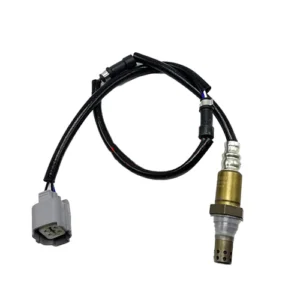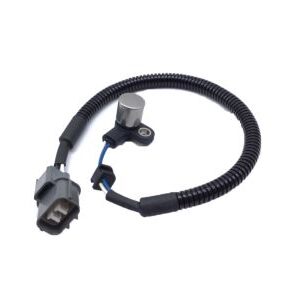Title: Mastering the Airflow Sensor: Navigating Engine Performance with Precision
In the intricate ecosystem of an automotive engine, where air and fuel blend to power the drive, the airflow sensor emerges as a vital navigator, guiding the engine’s performance with precision. Despite its relatively modest size and understated presence, this essential component plays a pivotal role in ensuring optimal combustion, fuel efficiency, and emissions control. In this blog, we’ll explore the significance of the airflow sensor, how it works, its importance in engine operation, and its indispensable contribution to the driving experience.
### Unveiling the Airflow Sensor
The airflow sensor, also known as the mass airflow sensor (MAF sensor), is a critical component of the engine management system in modern vehicles. Positioned in the intake air path, its primary function is to measure the volume and density of incoming air entering the engine.
### How the Airflow Sensor Works
The airflow sensor operates based on various principles, including hot wire, hot film, or vane technologies. Regardless of the method used, the basic principle remains the same: the sensor detects the mass or volume of incoming air and converts it into electrical signals, which are then transmitted to the engine control unit (ECU) or powertrain control module (PCM). The ECU or PCM uses this information to calculate the appropriate air-fuel ratio for optimal combustion and engine performance.
### Importance of the Airflow Sensor in Engine Operation
1. **Precise Fuel Delivery**: The airflow sensor provides essential data to the ECU or PCM, allowing for precise control of fuel delivery. By accurately measuring the volume and density of incoming air, the sensor ensures that the correct amount of fuel is injected into the combustion chambers, optimizing combustion efficiency and engine performance.
2. **Optimized Combustion**: Proper air-fuel ratio is crucial for efficient combustion. The airflow sensor helps maintain the ideal air-fuel mixture, ensuring complete combustion of fuel and minimizing emissions of harmful pollutants such as carbon monoxide (CO), nitrogen oxides (NOx), and hydrocarbons (HC).
3. **Engine Performance**: The airflow sensor plays a significant role in determining engine performance characteristics such as power output, throttle response, and drivability. By providing real-time data on air intake, the sensor allows the ECU or PCM to adjust engine parameters for optimal performance under various driving conditions.
### Signs of a Failing Airflow Sensor
– **Check Engine Light**: An illuminated check engine light on the dashboard may indicate a problem with the airflow sensor or related components.
– **Poor Engine Performance**: Engine hesitation, rough idling, or lack of power may occur if the airflow sensor is malfunctioning or sending incorrect signals to the ECU or PCM.
– **Reduced Fuel Efficiency**: A decrease in fuel efficiency or sudden drops in mileage may occur if the airflow sensor is not functioning properly, resulting in incorrect fuel delivery and inefficient combustion.
### Conclusion
In the intricate tapestry of engine management and performance, the airflow sensor stands as a silent navigator, guiding the engine’s performance with precision and accuracy. From optimizing fuel delivery to ensuring efficient combustion and enhancing engine performance, the role of the airflow sensor in shaping the driving experience cannot be overstated. As automotive technology continues to advance, the importance of airflow sensors in achieving optimal engine operation remains undeniably critical, ensuring that vehicles navigate the roads with power, efficiency, and reliability.
Only 3 left in stock (can be backordered)
$29,137.67
Title: Mastering the Airflow Sensor: Navigating Engine Performance with Precision
In the intricate ecosystem of an automotive engine, where air and fuel blend to power the drive, the airflow sensor emerges as a vital navigator, guiding the engine’s performance with precision. Despite its relatively modest size and understated presence, this essential component plays a pivotal role in ensuring optimal combustion, fuel efficiency, and emissions control. In this blog, we’ll explore the significance of the airflow sensor, how it works, its importance in engine operation, and its indispensable contribution to the driving experience.
### Unveiling the Airflow Sensor
The airflow sensor, also known as the mass airflow sensor (MAF sensor), is a critical component of the engine management system in modern vehicles. Positioned in the intake air path, its primary function is to measure the volume and density of incoming air entering the engine.
### How the Airflow Sensor Works
The airflow sensor operates based on various principles, including hot wire, hot film, or vane technologies. Regardless of the method used, the basic principle remains the same: the sensor detects the mass or volume of incoming air and converts it into electrical signals, which are then transmitted to the engine control unit (ECU) or powertrain control module (PCM). The ECU or PCM uses this information to calculate the appropriate air-fuel ratio for optimal combustion and engine performance.
### Importance of the Airflow Sensor in Engine Operation
1. **Precise Fuel Delivery**: The airflow sensor provides essential data to the ECU or PCM, allowing for precise control of fuel delivery. By accurately measuring the volume and density of incoming air, the sensor ensures that the correct amount of fuel is injected into the combustion chambers, optimizing combustion efficiency and engine performance.
2. **Optimized Combustion**: Proper air-fuel ratio is crucial for efficient combustion. The airflow sensor helps maintain the ideal air-fuel mixture, ensuring complete combustion of fuel and minimizing emissions of harmful pollutants such as carbon monoxide (CO), nitrogen oxides (NOx), and hydrocarbons (HC).
3. **Engine Performance**: The airflow sensor plays a significant role in determining engine performance characteristics such as power output, throttle response, and drivability. By providing real-time data on air intake, the sensor allows the ECU or PCM to adjust engine parameters for optimal performance under various driving conditions.
### Signs of a Failing Airflow Sensor
– **Check Engine Light**: An illuminated check engine light on the dashboard may indicate a problem with the airflow sensor or related components.
– **Poor Engine Performance**: Engine hesitation, rough idling, or lack of power may occur if the airflow sensor is malfunctioning or sending incorrect signals to the ECU or PCM.
– **Reduced Fuel Efficiency**: A decrease in fuel efficiency or sudden drops in mileage may occur if the airflow sensor is not functioning properly, resulting in incorrect fuel delivery and inefficient combustion.
### Conclusion
In the intricate tapestry of engine management and performance, the airflow sensor stands as a silent navigator, guiding the engine’s performance with precision and accuracy. From optimizing fuel delivery to ensuring efficient combustion and enhancing engine performance, the role of the airflow sensor in shaping the driving experience cannot be overstated. As automotive technology continues to advance, the importance of airflow sensors in achieving optimal engine operation remains undeniably critical, ensuring that vehicles navigate the roads with power, efficiency, and reliability.
| Warehouse | Inventory at warehouse 2 |
|---|




Get E-mail updates about our latest products and special offers.
Sensors and More is Jamaica’s ultimate online auto parts store. Established in 2020, we specialize in genuine electrical parts for Japanese, Read more…
Reviews
There are no reviews yet.